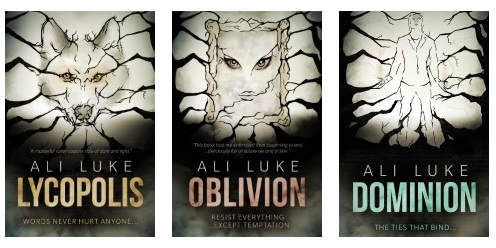How to Get Your Characters Right As You Rewrite Your Novel

When you’re reworking your first or second draft, you’ll likely be making some changes relating to your characters and their characterisation (how they come across on the page).
If you didn’t quite nail your characters’ personalities or their character arcs during the first draft … that’s totally normal!
Even if you spent time getting to know your characters before you began writing, your idea of them probably shifted a little (or maybe even a lot) during the writing process.
Perhaps a character who was once timid became unexpectedly bold, or a character who initially seemed like a total jerk had a tender side. Maybe the relationship between two characters shifted, too: they might have started out hostile but slowly become more friendly, and you want to nudge that dynamic one way or the other.
Getting characters right can be difficult, and a lot of writing advice out there around characters can be fairly general.
Perhaps you’ve been told to consider “whether the characters convince” (Lynne Bryan) or that you should “create a multi-dimensional, round character with recognizable personality traits and quirks” (MasterClass).
This advice is fine as far as it goes … but you might find it helps to have some practical ways to make tweaks to your characterisation as you redraft.
Here are a few ideas and techniques that can help:
1. Pin Down the Voice for Each of Your Main Characters
Some characters are always joking around and never take anything seriously. Others are straight-laced and may even struggle to get jokes. Your character might be mean, sarcastic, shy, or outspoken.
If they’re a point of view (POV) character, you’ll need to think about their voice in the narrative as well as in the dialogue.
For instance, let’s say your characters have just landed on a new spacestation. A jaded, world-weary character might describe The same overpriced stores selling the same tourist tat as every other station. But a young, enthusiastic character who’s never left their homeworld before might see this as A dazzling array of different stores along a gleaming corridor.
When you’re drafting, you might have fully developed some of your characters early on, so their voice might not come across consistently.
Perhaps they’re very serious at first, but then they show a sarcastic edge. Or maybe they seem almost shy at the start of your story, but it becomes clear their reserved nature hides a sharp wit.
Having a character who’s inconsistent – joking and cheerful one minute, angry the next – can be powerful and very unsettling. They’re unlikely to be on the “good” side.
Try This
If you feel that you’re struggling to quite pin down the voice for a third-person perspective character, you might want to try rewriting one of their scenes in the first person.
This can help you get closer to their mindset, to the words and phrases they’d use, and the way they’d describe things.
2. Show Us What the Character is Thinking
With some characters, what you see is what you get! They might be outspoken or wear their heart on their sleeve, always saying exactly what’s on their mind.
Other characters may keep a lot to themselves. They may feel strongly about something but not talk of their feelings, or they might be hiding a secret from everyone else.
The difficulty here is that your characters can come across confusingly to your reader if their motivations aren’t clear.
As the author, you might know that your hero is only behaving horribly because he believes that the heroine has deeply wronged his family … but if we never learn about this from Rupert’s thoughts, we’ll just think he’s a total git and unworthy of her love.
In some cases, you won’t be able to directly tell us what a character is thinking, because you don’t have any scenes from their perspective. That’s fine – you can still hint at it or find other ways to convey their thoughts. That might be through an overheard conversation, a letter or note, an expression, or even body language or tone of voice.
Try This
Experiment with different ways to show your characters’ thoughts and feelings on the page:
Internal dialogue: set out like speech, but without quotation marks. It normally uses italics.
Sarah thought, Why can’t Joanne understand how hard this is for me? Not just losing Dad, but Theo too.
Summary: including the character’s thoughts or emotions as part of the narrative.
Sarah wished Joanne could understand how hard this was.
Action: we can often glean a character’s likely thoughts from what they do.
Sarah turned away to hide her tears.
Some authors use all three of these techniques. Some use summary and action, but not internal dialogue. And some don’t even tend to use summary, staying outside their characters’ heads and leaving the reader to understand how the character is feeling based on what they do and say out loud. (Hemingway’s short story Hills Like White Elephants is a great example of this.)
3. Shorten or Extend Scenes Involving a Specific Characters
As you read over your first or second draft and think about potential changes, you may find that one of the characterisation tweaks you want to make is about how two different characters relate.
In fact, if you’re changing even one character, that’s going to alter relationships at least a little. Perhaps your protagonist becomes a little more proactive and outspoken – and that shifts their relationship with the mentor character or best friend within the story.
There may be scenes you need to cut down, if a particular character (or character interaction) has become less important to your novel. It might make sense to play down the connection between them so you can shine a spotlight on other character relationships.
Or, you might want to extend or add to certain scenes, perhaps bringing in more conflict, adding complexity, or showing the gradual growth or change in a relationship.
Try This
Choose a scene that isn’t quite working in your draft: perhaps it feels unimportant to the story, the pace drags, there’s little or no tension, or things get resolved a little too tidily.
Think about how your novel would work if:
- You cut this scene out altogether. Would the story still hang together fine? The scene might not be needed at all … and making a cut is an easy way to fix a scene that’s not working!
- You added another character to the scene. A conversation that goes smoothly between two characters might be complicated by the presence of a third – perhaps allowing for more subtlety as things go unsaid, or more tension as tempers flare.
You may want to experiment with rewriting some or all of the scene.
4. Consider Adjusting the Backstory of Your Characters
As you wrote your draft, you may have found moments where it made sense to add in some backstory for your characters. Even if you planned this out (maybe using character questionnaires or worksheets) before your story began, you probably found things emerging along the way.
As you rewrite, you may need to check you’ve fully incorporated that backstory. That could mean using flashbacks to the past – but it might also simply mean adjusting how your character responds to certain situations, in the light of what you know about their life before your story begins.
The backstory between characters might also be ripe for adjustment. I don’t think I’ve ever read a story when every single character was completely new to every other character.
Even if the main characters have never met before the story begins, there’ll likely be a supporting cast of family members, friends, or colleagues … and your character comes with all the baggage of these relationships.
Sometimes, if a character doesn’t seem quite integrated into your plot, it might work to change the backstory. Instead of being a handsome stranger, perhaps they’re a childhood friend who your heroine meets again after many years have gone by. Or perhaps that awful colleague has history with your main character: they used to be in the same karate class.
Try This
If some of your characters seem to pop into being for your story – without any baggage from the past – then it might be time to give them a bit of backstory!
What key events might have taken place in your character’s life up until the point where the story begins? Are there things they believe about themself or the world that they need to unlearn in order to be fulfilled? (This is often called the Lie the character believes.)
Think about specific ways you could work backstory into your story. You could try:
- Dialogue where one character talks about their past (be careful not to infodump)
- A character’s internal thoughts (again, watch out for infodumping)
- Flashbacks, where you have a whole scene from the past.
- Diary entries or letters from the past (these can be a bit clunky but can work fine in some novels)
- A conversation – or an argument! – between characters about their shared history.
- In-jokes or other references to characters’ shared past.
5. Remember That Character Impacts on Plot
One of the tricky things about tweaking characters as you rewrite is that shifting who your characters are will also change your plot.
You won’t necessarily need to make major changes (like completely rewriting your ending), but you might find that certain events need to shift as your characters take slightly different actions.
This is normal and expected! But it’s important to keep in mind that when you’re rewriting, you’re probably not just going to be changing a line of dialogue here or a facial expression from your character there.You might well need to adjust whole scenes.
For instance, if you decide your character is going to be more proactive and less passive, that might kick off a chain of events in the plot that you need to now tweak throughout your story.
Try This
Think about a specific way you’re changing a character’s personality. How will this affect what they do? How will you need to adjust the plot as a result of that?
You might want to consider:
- Adding in extra material to the story: perhaps a particular stage of the plot will now take a little longer or be more complex. Let’s say your heroine’s new backstory has made her less trusting and more wary: it might take longer for the hero to win her over.
- Cutting out some material. Maybe your character had a lot of internal conflict because he was so indecisive, but you’ve decided that was slowing down the pace too much and your character is now more proactive. You can just cut those passages of internal back-and-forth.
As with the other tips, feel free to experiment! There’s nothing stopping you writing a scene several different ways, then deciding which works best.
Getting your characters right is well worth the time you invest. Readers will often care about characters more than they care about the details and twists and turns of your plot.
I’m part of a science fiction book group, and the stories we love are the ones with truly three-dimensional characters: ones who feel like real people, ones who we want to root for.
We enjoy the plots (though occasionally struggle to follow them!) and the ideas behind the stories too, but the books we enjoy most are definitely the ones with strong characters holding the story together.
Whatever genre you write in, your characters are important – and it may take a few drafts to truly get to know them, and to pin down their characterisation on the page.
For more help with characters, take a look at:
- Seven Common Problems Writers Have With Characters
- Character Flaws: Why They’re So Important to Your Story [With Examples]
- What Comes Before and After Your Story? Character Backstory and Living Happily Ever After
- 15 Ways to Make Your Characters Suffer (for the Good of Your Novel)
- How to Write Character Descriptions That Work [With Examples]
About

I’m Ali Luke, and I live in Leeds in the UK with my husband and two children.
Aliventures is where I help you master the art, craft and business of writing.
Start Here
If you're new, welcome! These posts are good ones to start with:
Can You Call Yourself a “Writer” if You’re Not Currently Writing?
The Three Stages of Editing (and Nine Handy Do-it-Yourself Tips)
My Novels

My contemporary fantasy trilogy is available from Amazon. The books follow on from one another, so read Lycopolis first.
You can buy them all from Amazon, or read them FREE in Kindle Unlimited.


0 Comments